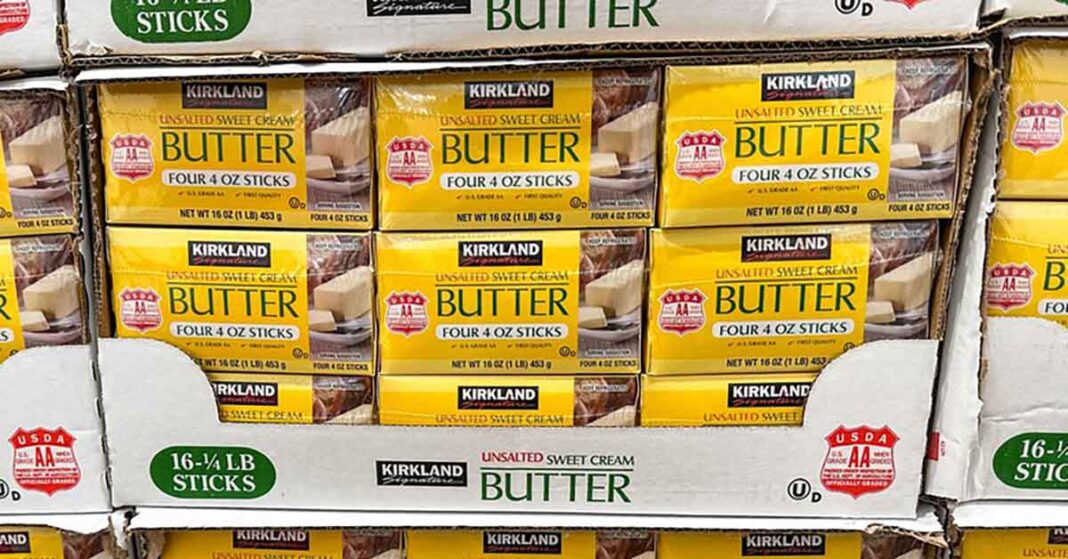Costco is in the process of a massive recall of 79,200 pounds of butter sold at its Texas outlets due to the presence of an allergen that was not declared on the label.
Continental Dairy Facilities Southwest LLC, which produces the butter for Costco’s Kirkland brand sold in Texas, initiated the recall on October 11. The US Food and Drug Administration (FDA) classified the recall on November 7 as Class II for potentially exposing users to an “undeclared allergen.”
The recall includes 1,300 cases of 16-ounce, 4-stick packs of Kirkland Signature Unsalted Sweet Cream Butter and 900 cases of 16-ounce, 4-stick packs of Kirkland Signature Salted Sweet Cream Butter. The recall lists six lots of products that have “Best By” dates of Feb. 22, 2025 to March 29, 2025.
The reason for the recall? Although the recalled butter lists “cream” as an ingredient, the manufacturer failed to include the common name of the allergen, “milk,” in parenthesis following the word cream or in a “Contains” statement per US labeling regulations known as FALCPA.
The Food Allergen Labeling and Consumer Protection Act (FALCPA) of 2004 is an amendment to the Federal Food, Drug, and Cosmetic Act that requires the label of a food containing an ingredient with protein from a major food allergen to declare the presence of the allergen in a prescribed manner. FALCPA, together with the FASTER Act, identifies nine major allergens (“the Top 9”) that must be labeled in a specific manner: peanuts, tree nuts, milk, eggs, soy, wheat, fish, crustacean shellfish, and sesame.
Everyone purchasing food for a person with a food allergy should familiarize themselves with the regulation.
FALCPA Allergen Labeling Requirements
Food manufacturers must label food products that contain an ingredient that is or contains protein from a major food allergen in one of two ways.
The first option for food manufacturers is to include the name of the food source in parenthesis following the common name of the major food allergen in the list of ingredients in instances when the name of the food source of the major allergen does not appear elsewhere in the ingredient statement. For example:
Ingredients: Enriched flour (wheat flour, malted barley, niacin, reduced iron, thiamin mononitrate, riboflavin, folic acid), sugar, partially hydrogenated soybean oil, and/or cottonseed oil, high fructose corn syrup, whey (milk), eggs, vanilla, natural and artificial flavoring) salt, leavening (sodium acid pyrophosphate, monocalcium phosphate), lecithin (soy), mono-and diglycerides (emulsifier)
The second option is to place the word “Contains” followed by the name of the food source from which the major food allergen is derived, immediately after or adjacent to the list of ingredients, in type size that is no smaller than the type size used for the list of ingredients. For example:
Contains Wheat, Milk, Egg, and Soy





